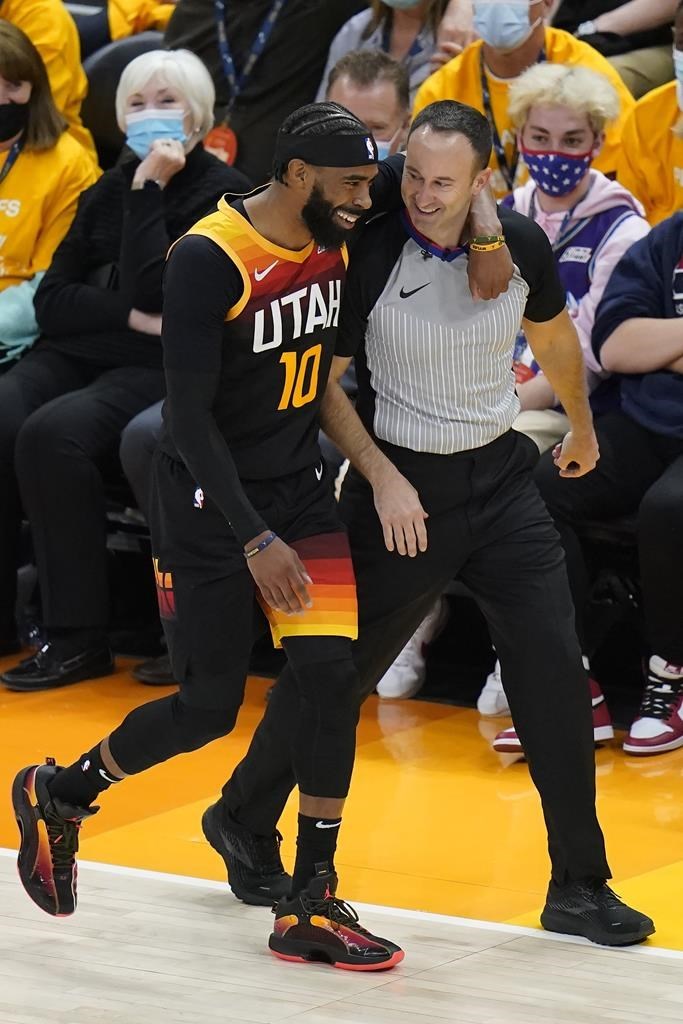Changing the way the so-called “transition take fouls” are officiated this season won’t keep them out of the NBA game.
In fact, the league thinks that sort of play now may make the game better.
The long-awaited rule change — one of the points of education for the NBA going into this season — was a major talking point this week for referees, who gathered for their preseason meetings now that training camps around the league are about to open. There are other emphasis points, but the take-foul changes may be the most significant.
“Some of our best play at the NBA is defensive basketball. We don’t want to discourage that; in fact, we think this rule will encourage that because now we’re asking you to make a legitimate play on the ball,” said Monty McCutchen, the NBA’s Senior Vice President overseeing referees and training. “From that standpoint, we think more exciting basketball is on the horizon and these transition scoring opportunities — both defensively and offensively —can be highlight plays. We’ve lost some of that and we think this rule is going to inject that exciting play back into our game.”
The take foul — in which the defender does not make a play on the ball — is what the league classifies as one that occurs either “during a transition scoring opportunity or immediately following a change of possession and before the offensive team had the opportunity to advance the ball.” The exception is in the final 2 minutes of the fourth quarter or overtime.
The new penalty for such a foul is one free throw, which may be attempted by any player on the offended team in the game at the time the foul was committed, along with continued possession by the offended team.
But the league also hopes that defenders making plays on the ball in those situations leads to exciting plays, whether the gamble leads to the offensive team getting an easy score or results in the defensive team cashing in a turnover.
“Our players and our coaches, they’re good at their jobs,” McCutchen said. “They’re good at their jobs, because they’re committed at their jobs. They absolutely will stop doing this if we’re consistent in our work, which I fully anticipate us being. They’ll then know how to coach it properly. And therein lies the glory of transition basketball being reinjected into our game.”
Other points of education this season are holdovers from recent years, such as players having freedom of moment in both the post and on the perimeter, setting proper screens, avoiding travels and having “respect for the game” — often meaning not being overly demonstrative toward referees or others when a call doesn’t go their way.
Bench conduct will be more closely monitored as well, after an uptick in recent years of players standing in their bench areas during play and often encroaching on the sideline or baseline -- getting perhaps a bit too close to the action.
“That’s going to be a little bit of a change,” McCutchen said. “We want players on the bench to be able to react spontaneously to exciting basketball play. But it’s important that they not stand the whole game, because now you’re getting into game integrity issues, injury possibility for game participants, we want to eliminate all that.”
There’s another change coming, one where some teams won’t like seeing the light come on.
When the NBA Replay Center in Secaucus, New Jersey, makes a scoring change during play — typically whether a 3-point shot was really a 3 or a 2, or if a basket beat the 24-second shot clock or not — a blue light will flash at the scorer’s table, indicating that a decision is about to be announced.
And that change will be announced at the first neutral opportunity, meaning a game could be stopped in certain situations to update the score.
It’s designed to eliminate situations like the one in Game 7 of last season’s Eastern Conference finals, when Miami’s Max Strus made a 3-pointer early in the third quarter for the Heat in their game against the Boston Celtics. About 3 minutes of game time passed before fans in Miami were alerted that those three points were coming off the scoreboard, after the replay center said Strus stepped out of bounds — though the Heat argued that night that they had not seen any definitive angle saying he was clearly on the line.
Miami wound up losing 100-96.
“The new interpretation is going to allow us to exponentially speed that up so everyone has the best information in as close to real-time as they can,” McCutchen said.
___
More AP NBA: https://apnews.com/hub/NBA and https://twitter.com/AP_Sports
Tim Reynolds, The Associated Press


